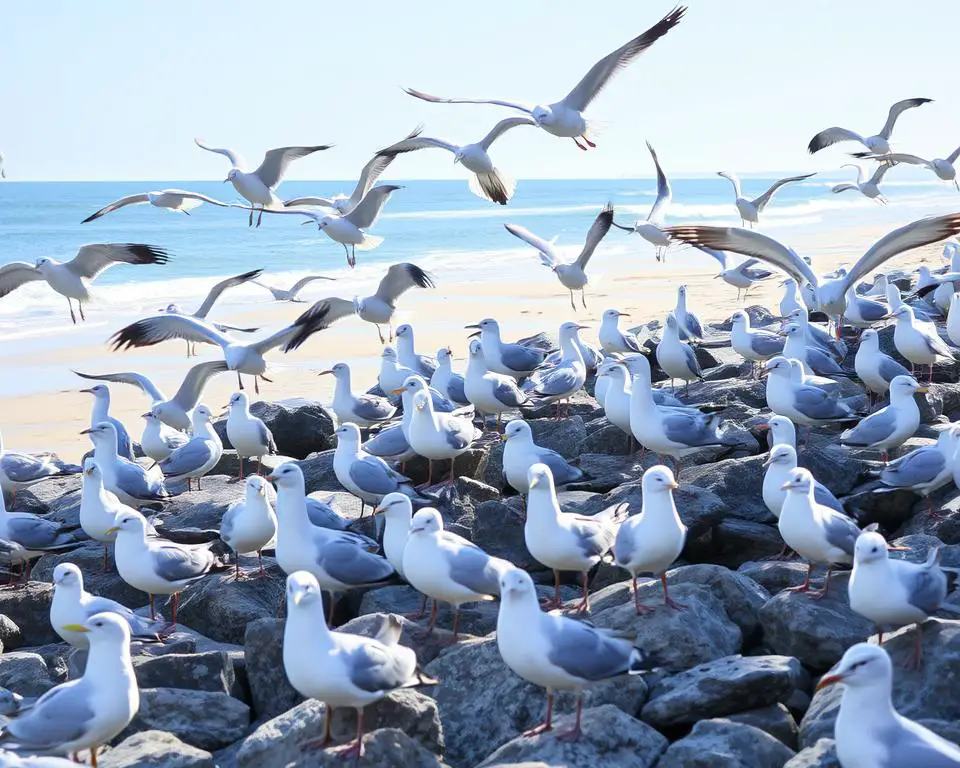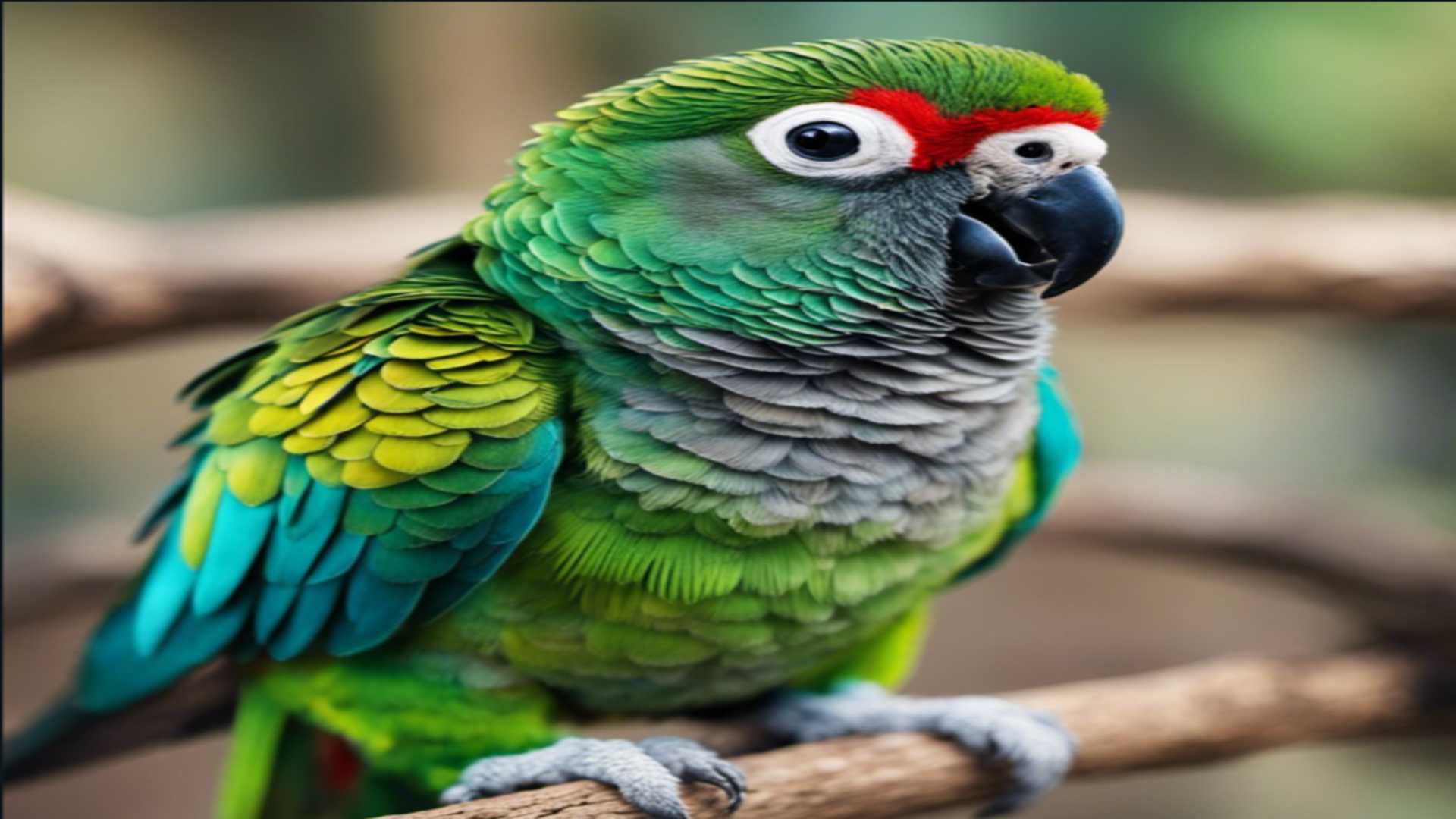Seagulls are known for their aerial prowess, but they also have some impressive underwater abilities. While not all seagull species are equally adept at diving and swimming, many of them can remain submerged for surprising lengths of time.
In this article, we’ll try to highlight the different factors that determine how long seagulls can stay underwater.
So, without wasting time, let’s get started!
Can seagulls go underwater?
Seagulls are not designed to swim underwater like ducks, but they can briefly submerge themselves while diving for food.
They are capable of holding their breath and staying underwater for up to 30 seconds while hunting for fish or other prey. However, they primarily float on the surface of the water and do not have the same abilities as aquatic birds.
Can seagulls swim underwater?
Seagulls are capable of swimming underwater for short distances to catch fish or other prey. They are not built for long periods underwater like diving birds. Seagulls use their webbed feet to paddle and their wings to help steer while underwater. However, they are primarily surface feeders and do not spend extended time submerged.
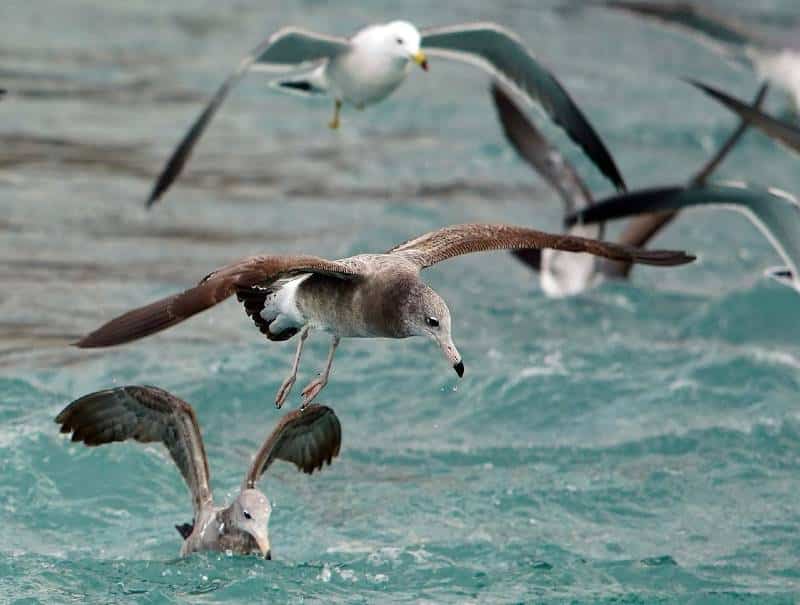
However, they are not designed for long periods underwater like some other birds, so their dives are typically brief and shallow.
Can seagulls breathe underwater?
While seagulls are skilled at diving underwater to catch fish, they cannot breathe underwater.
Seagulls must resurface to breathe air, as they do not possess the ability to extract oxygen from water like fish or other marine creatures. So, although they can stay underwater for short periods of time while hunting for food, seagulls cannot breathe underwater.
How long can seagulls hold their breath underwater?
The duration that seagulls can stay submerged varies depending on the species and the individual bird’s physical condition. Generally, seagulls can stay underwater for up to 30 seconds, but some species are capable of remaining submerged for up to a minute.
Why do seagulls dive into the water?
Seagulls dive into the water primarily as a method to catch food. Their diet can include fish and other sea creatures, which they spot from the air with their excellent vision before diving to capture them.
This behavior is part of their broader feeding strategies, which also include stealing food from other birds, dropping hard-shelled mollusks onto rocks to break them open, and scavenging. Seagulls have adapted to a wide range of feeding methods, showcasing their intelligence and versatility.
They are known to be opportunistic feeders, taking advantage of various food sources available in their environment, which can also lead them to frequent human-populated areas in search of easy meals.
How do seagulls hit the water without getting hurt?
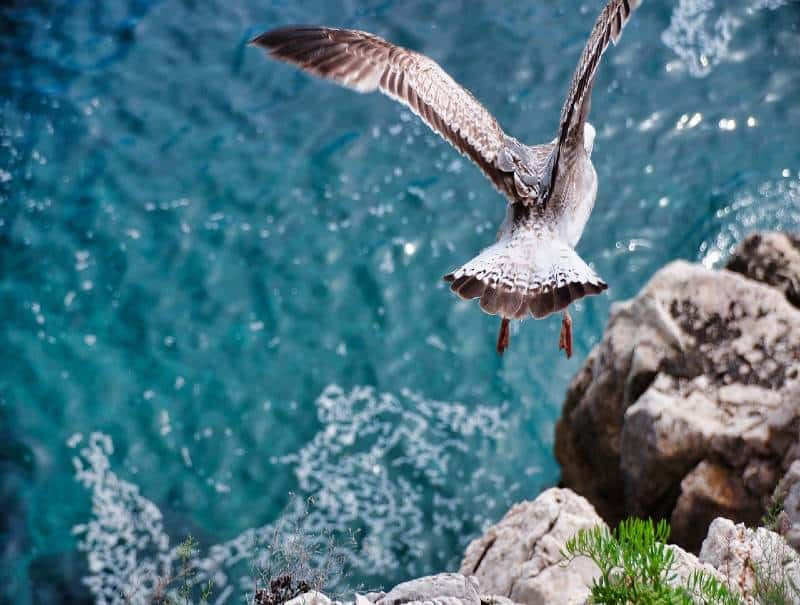
Seagulls are able to hit the water without getting hurt due to their unique adaptations. Here are a few ways they do it:
- Seagulls have a layer of air pockets beneath their feathers that helps to cushion the impact of hitting the water. This layer of air also helps to keep the bird buoyant and afloat.
- They have strong, flexible legs and feet that they use to absorb some of the force of hitting the water.
- Seagulls have a nictitating membrane, which is a third eyelid that helps to protect their eyes from the impact of hitting the water.
- They also have a streamlined body shape that allows them to enter the water smoothly and reduce the impact of hitting the surface.
- Seagulls are able to adjust the angle of their body and wings to control their descent and minimize the force of impact.
Seagulls have developed several physical adaptations that enable them to safely plunge and navigate in water. These modifications not only shield their bodies from the impact of hitting the water but also facilitate smooth and efficient movement through their aquatic habitat.
Read also: Can Seagulls Drink Salt Water? (3 Minutes Read)
Adaptations for underwater survival
Seagulls have several adaptations that help them survive underwater. They have a streamlined body shape that allows them to move through the water with ease, and their wings are flattened against their body to reduce drag.
They’ve also specialized respiratory system that allows them to hold their breath for extended periods.
When they dive, their heart rate slows down, and their blood flow is redirected to their essential organs, such as the brain and heart. This adaptation allows seagulls to conserve oxygen and stay underwater longer.
Comparison with other aquatic birds
Seagulls are not the only birds that can dive and swim underwater. Other aquatic birds, such as penguins and cormorants, also have adaptations that allow them to survive underwater. However, seagulls are unique in that they can fly and swim equally well.
This ability allows them to catch prey both in the air and underwater, giving them a significant advantage over other birds.
That said, seagulls are impressive underwater creatures with remarkable diving abilities. Their adaptations for underwater survival, such as their respiratory system and streamlined body shape, make them well-suited for life in and around the water.
While other aquatic birds have similar capabilities, seagulls’ unique ability to fly and swim makes them truly remarkable species.
Seagull Feeding habits
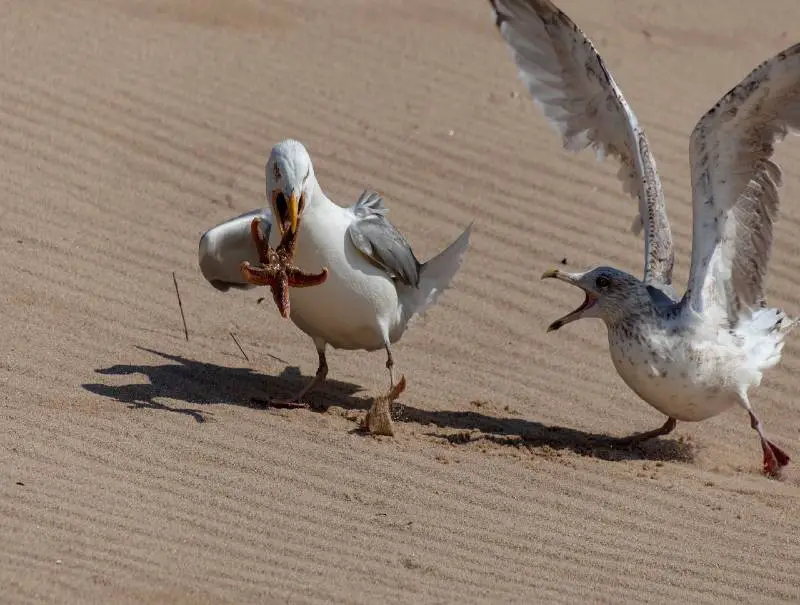
Seagulls are opportunistic feeders and will eat a variety of foods depending on what is available. Their diet consists of fish, crustaceans, mollusks, earthworms, and insects. Seagulls are also known to scavenge for food and will eat anything from dropping to garbage.
Seagulls use a variety of hunting techniques to catch their prey. They will hover over the water and dive down to catch fish.
They will also fly low over the water and scoop up fish with their beaks. Seagulls are also known to drop rocks on the shells of clams to crack them open and eat the meat inside.
Feeding on Land and Sea

Seagulls are omnivores and will eat both on land and at sea. On land, they will feed on insects, earthworms, and small animals. They are also known to feed on crops in fields. At sea, they will feed on fish and other marine life.
Seagulls are also known to steal food from other birds and animals. They will often follow fishing boats and scavenge for scraps of fish that have been thrown overboard.
Scavenging Behaviour
Seagulls are opportunistic scavengers and will eat anything they can find. They are often seen scavenging at garbage dumps and landfills. They are also known to steal food from other birds and animals.
In conclusion, seagulls are opportunistic feeders that will eat a variety of foods depending on what is available.
They use a variety of hunting techniques to catch their prey and will feed both on land and at sea. Seagulls are also known to scavenge for food and will eat anything from dropping to garbage.
Adaptation to various environments
Seagulls have adapted to a variety of environments, including saltwater and freshwater habitats.
They have special glands that allow them to excrete excess salt, which is important for survival in saltwater environments. Seagulls are also able to learn and play, which helps them adapt to new environments and situations.
- Seagulls are able to fly long distances and migrate to different areas depending on the season.
- They are able to recognize potential dangers, such as snakes, and will avoid these areas.
- Seagulls are able to communicate with each other through a variety of vocalizations and body language.
Longevity and lifespan studies
Studies on the longevity and lifespan of seagulls have shown that they can live up to 20 years in the wild. However, their lifespan is dependent on various factors such as their environment, food availability, and predation.
Comparative studies with other bird species
Comparative studies with other bird species have shown that seagulls are among the best divers. For instance, they can stay underwater for longer periods compared to other birds, such as pigeons.
Now, seagulls are known to have larger lungs and more efficient oxygen exchange systems, which enable them to hold their breath for longer periods; that is why they can stay underwater for up to 30 seconds at a time.
Summary
Before we move on to the conclusion, we’ve summarized this article into a short list of key points for you to remember:
- Seagulls are proficient at diving and can remain submerged for approximately 30 seconds.
- Seagulls are opportunistic feeders and will eat a variety of foods depending on what is available.
- They are able to adapt to various environments, including saltwater and freshwater habitats, and can communicate with each other through vocalizations and body language.
Final thoughts
There you go! We hope this article has given you some insights into how long seagulls can stay underwater.
If you appreciated this article, don’t forget to leave us feedback; it would mean a lot to us, and if you have any questions left, feel free to reach out through our contact form.
Want to learn more about seagulls?
Ready to boost your knowledge to the next level? If so, check out the articles below:



